Movers and shakers
How the Saka people of the Great Steppe made history and great art
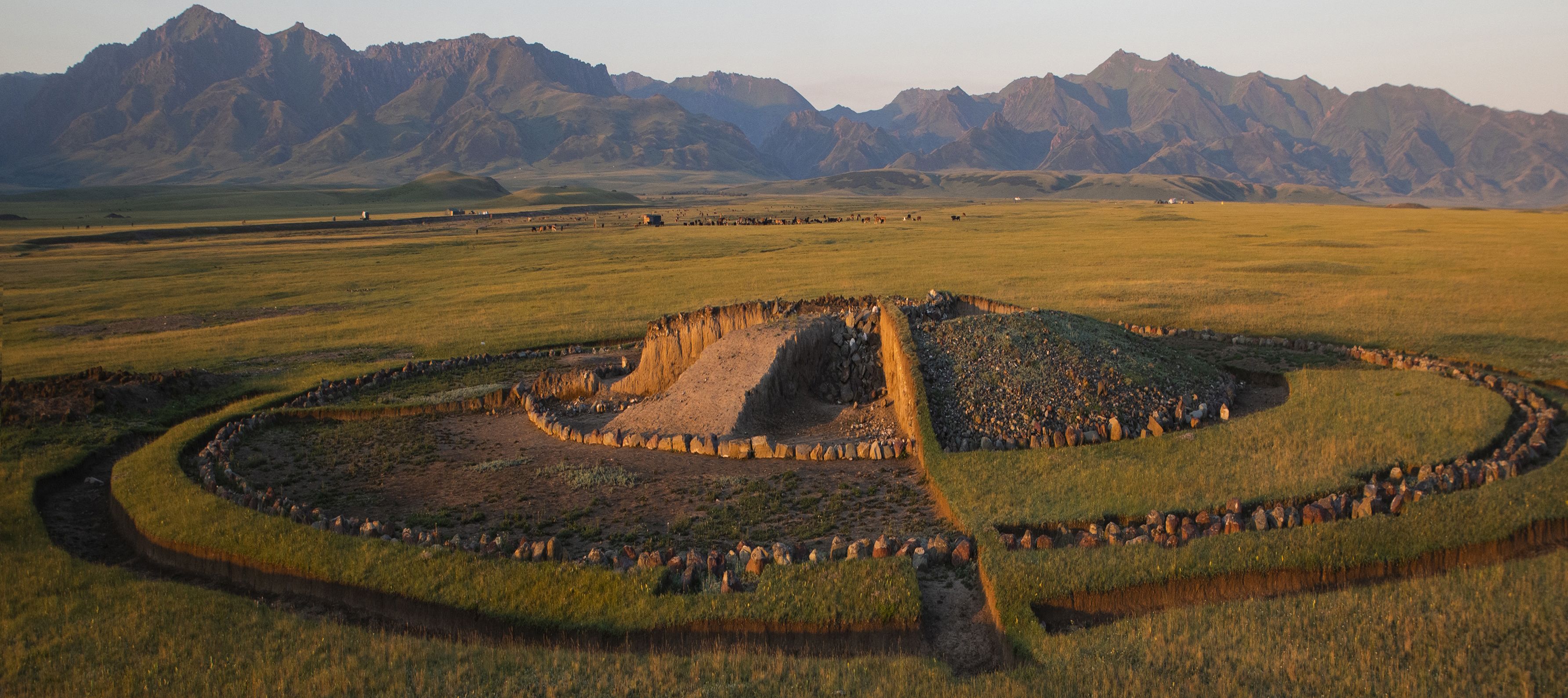
A once in a lifetime exhibition of Iron Age treasures recently discovered in East Kazakhstan transforms our understanding of an extraordinary civilisation rooted in one of the world’s most powerful landscapes.
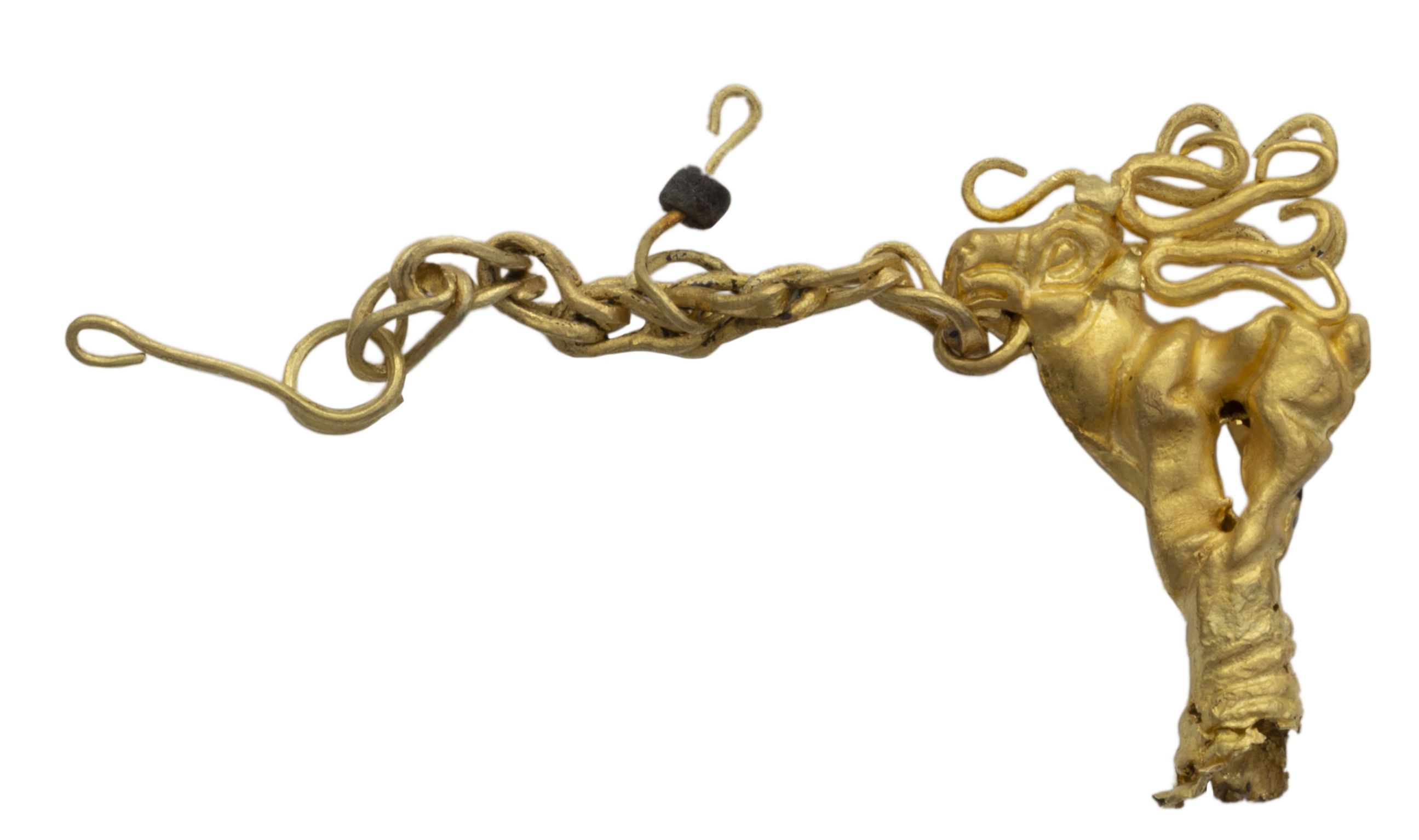
‘Gold of the Great Steppe’ at Cambridge’s Fitzwilliam Museum showcases finds from three Saka burial complexes, many for the first time outside Kazakhstan, including one excavated as recently as 2020.
The Persians sculpted them as defeated captives and subjects, the Greeks hired them as mercenaries and described them as nomadic barbarians. Tribes from every direction invaded their lands, followed centuries later by Genghis Khan, Peter the Great and the Soviet Union. And with each upheaval, their burials were callously looted, bones scattered. It is all too easy to portray the Saka-Scythian peoples of the Great Steppe as victims of history, but the reality is far more interesting.
Five years ago, East Kazakhstan launched an astonishingly successful archaeological research programme which led to the excavation of dozens of burial mounds and settlements built by the Saka-Scythian peoples between 900-200 BC.
In 2018, the archaeologists made an astonishing discovery: an undisturbed treasure trove of gold artefacts within Kurgan 4, a burial mound among hundreds of others in the Eleky Sazy valley of the Altai mountains region. Across the whole of the Great Steppe, there are many thousands of kurgan but many have been looted.
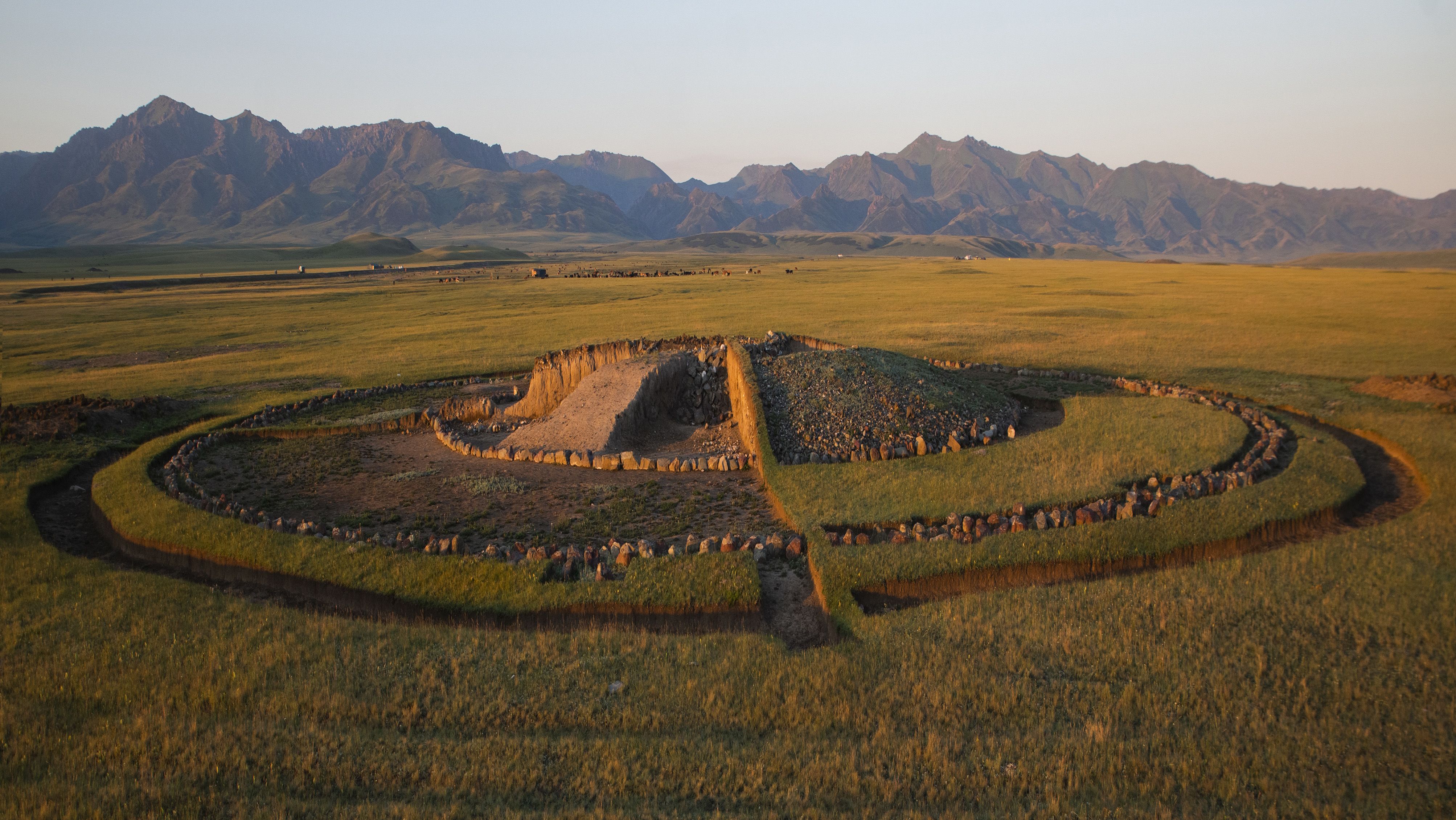
Excavated Saka burial mound, Kurgan 4, at Eleke Sazy. Image: Yevgeniy Domashev
Excavated Saka burial mound, Kurgan 4, at Eleke Sazy. Image: Yevgeniy Domashev
The Saka placed wooden coffins inside log cabins, around which they built stone chambers, before carefully covering them with a mound of rammed earth and turf topped with stones. Some mounds reached 10 metres in height. A tunnel was dug to enter the burial chamber and it was through this that looters usually entered.
In Kurgan 4, however, the archaeologists found astonishingly preserved jewellery, clothing adornments, horse harness ornaments and other decorative objects with the remains of a teenage archer, no older than 18 when he died. Close by, the team identified the heavily looted grave of a 13–14 year-old girl, most likely his sister. Only the partial collapse of the burial chamber is thought to have protected the archer’s grave from being plundered. The remains of these genetically verified relatives have stayed in Kazakhstan, but their story and artefacts take centre stage in the exhibition.
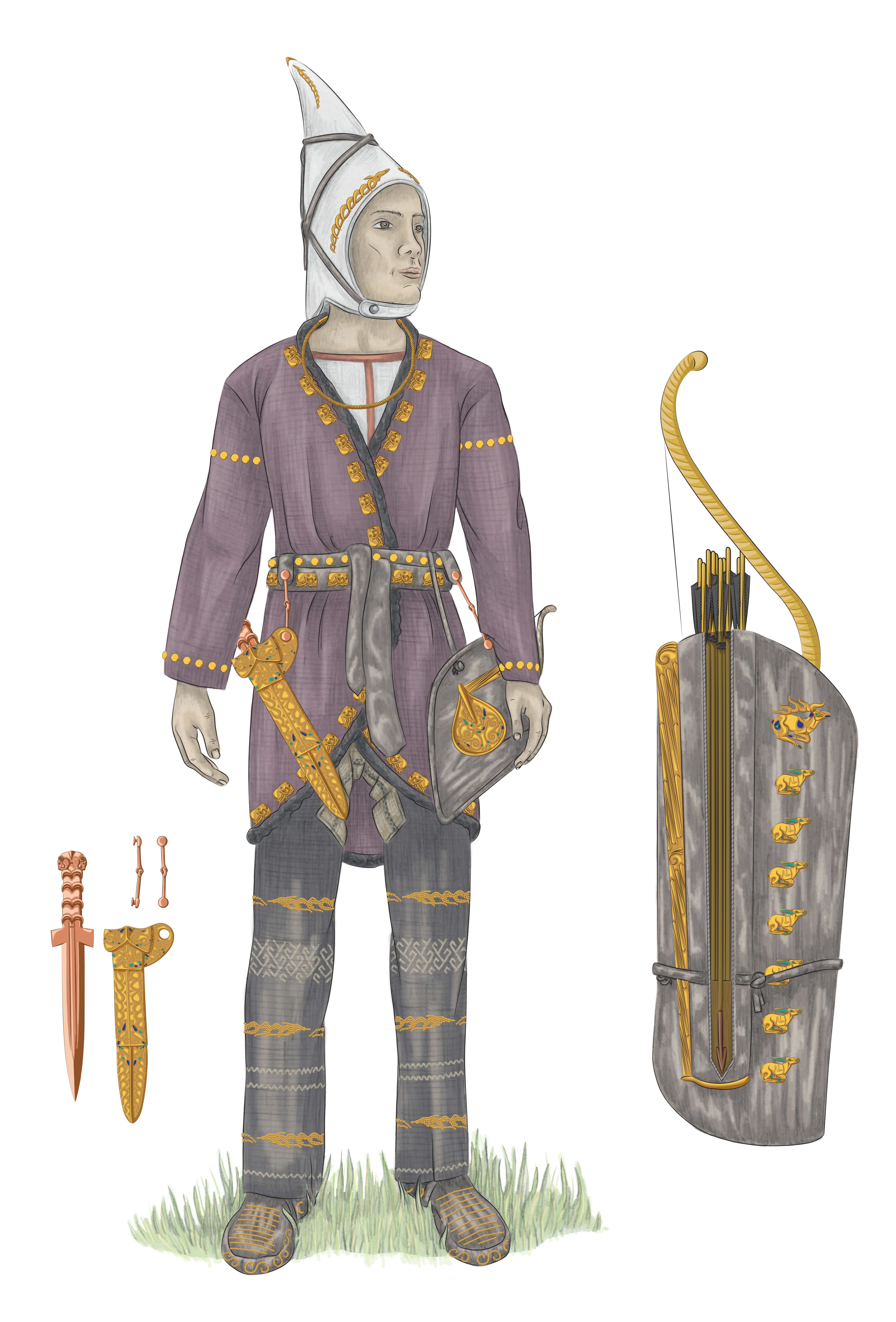
Reconstruction of the young archer found in Eleke Sazy. Image: Vicki Herring / Fitzwilliam Museum
Reconstruction of the young archer found in Eleke Sazy. Image: Vicki Herring / Fitzwilliam Museum
In 2019, the Fitzwilliam Museum and McDonald Institute for Archaeological Research began working with East Kazakhstan’s Regional Museum of Local History to arrange an exhibition and joint research projects to deepen understanding of these extraordinary discoveries and help share them with the world.
Despite the intrusion of a pandemic, the collaboration has benefited from remarkable serendipity. The gift of extra time, as well as the arrival of AHRC funding which bolstered philanthropic funding for the project, and not one but two Iron Age Kazakhstan experts at the University have all fallen neatly into place.
The exhibition’s curator, Dr Rebecca Roberts, became fascinated with Kazakhstan after spending a few months at an archaeological field school in the country at the end of her undergraduate first year. After graduating, Roberts returned, spending many archaeological field seasons in the country, and eventually completing a PhD on Bronze to early Iron Age plant remains from southeast Kazakhstan.
In 2020, Roberts was joined at Cambridge’s Archaeology Department by Saltanat Amir, a newly accepted PhD student from Kazakhstan. Specialising in archaeometallurgy, Amir is researching Scythian-Saka “Animal” style metalworking made of bronze, gold, and organic materials dating from 800 BCE – 100 CE. When I meet them, a fortnight before the exhibition opens, they are still pinching themselves.
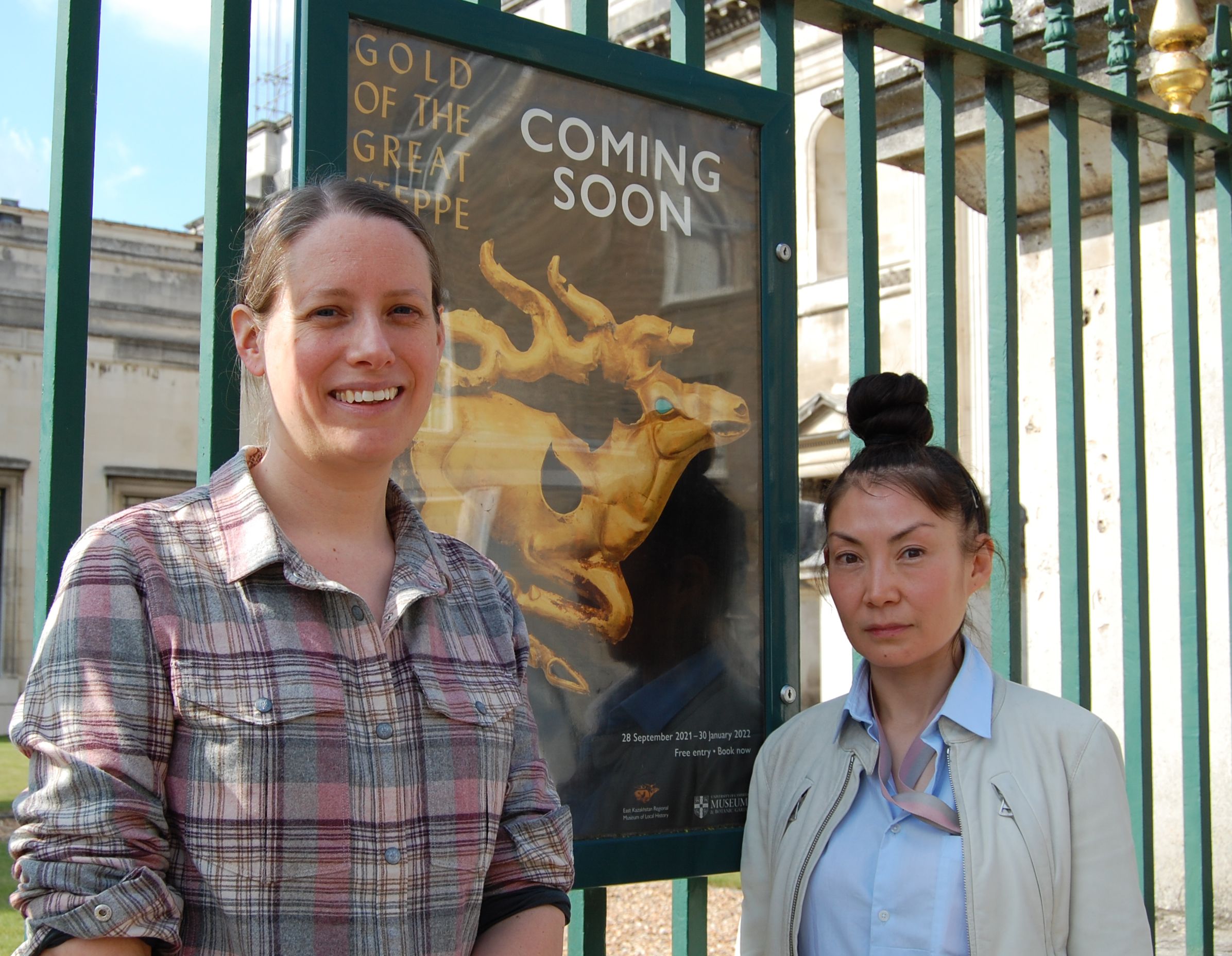
Dr Rebecca Roberts and Saltanat Amir outside the Fitzwilliam Museum in September 2021
Dr Rebecca Roberts and Saltanat Amir outside the Fitzwilliam Museum in September 2021
Roberts says: “We flew out to see the new finds just as the pandemic was rolling in. We had a portable x-ray fluorescence (XRF) machine, a microscope, and needed to photograph as much as possible. The Fitzwilliam team had to cut our visit short, and when we landed back at Heathrow I heard Kazakhstan had closed its borders while we were in the air. It was a close call – Indiana Jones under the closing door. It's a once in a lifetime opportunity to see this material in person, it's just incredible.”
The teenage archer found in Kurgan 4 is only the second of burial of its kind to be discovered completely intact. The last example was excavated in the late 1960s and this ‘Golden Man’ has become an iconic figure in Kazakh nation building. As the country now marks the 30th anniversary of its independence, these newly-discovered teenagers may become just as symbolically powerful.
Amir says: “During Russian colonisation, Kazakhs were forcibly persuaded that they had no connection with the Saka. But when I see all these things in the exhibition, I immediately understand that this is my culture.
“Some researchers spent years trying to understand that one find was part of a headdress, but I understood that the moment I saw it because it’s in my DNA. We are in the process of finding our national identity. This is not just an exhibition of wonders. This is our story, our history, our ancestors.”
Visitors to the exhibition will see virtually the archer’s entire burial, minus his human remains, with the gold objects laid out precisely as they were found. Also displayed are some organic materials – including leather and arrows made with wood, bronze and possibly horsehair binding – which have survived because the region’s cycle of very hot and cold temperatures acted to freeze-dry everything in the burial mound.
The finds provide a huge amount of information about Saka skills, beliefs and aesthetics. The discovery of around 2000 gold microbeads, each just 1 millimetre in diameter, which were sewn onto the young man’s shoes not only suggest the extraordinary ability of their makers but also the importance of shimmering repetition in Saka display, and the crucial role played by horses in everyday life. Once mounted on a horse, there was no better place for a Saka noble to display their wealth and status than on their elevated feet.
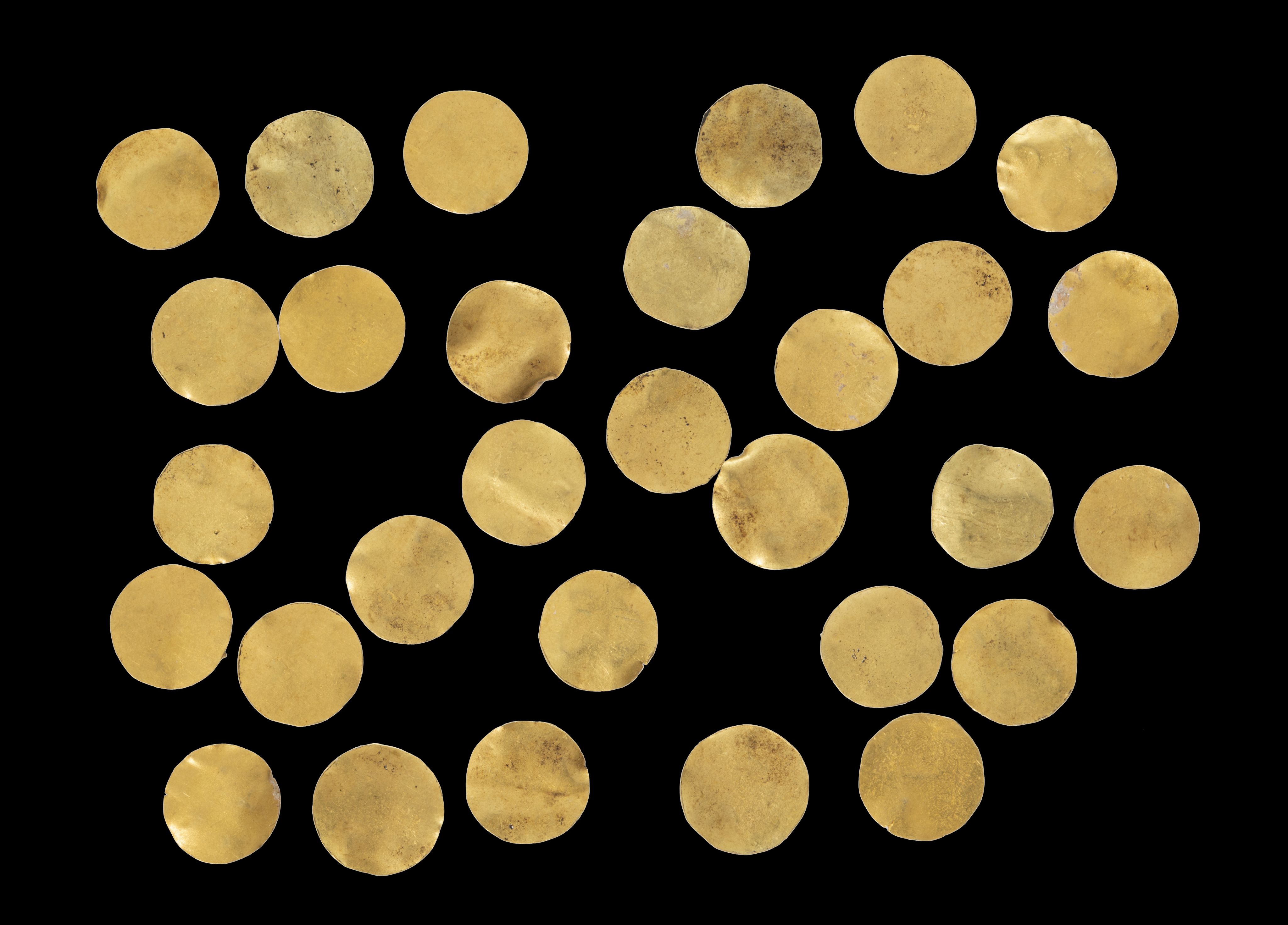
In addition to the gold microbeads found in the burial, archaeologists discovered a large number of gold discs in the hoard at Kurgan 4, Eleke Sazy
In addition to the gold microbeads found in the burial, archaeologists discovered a large number of gold discs in the hoard at Kurgan 4, Eleke Sazy
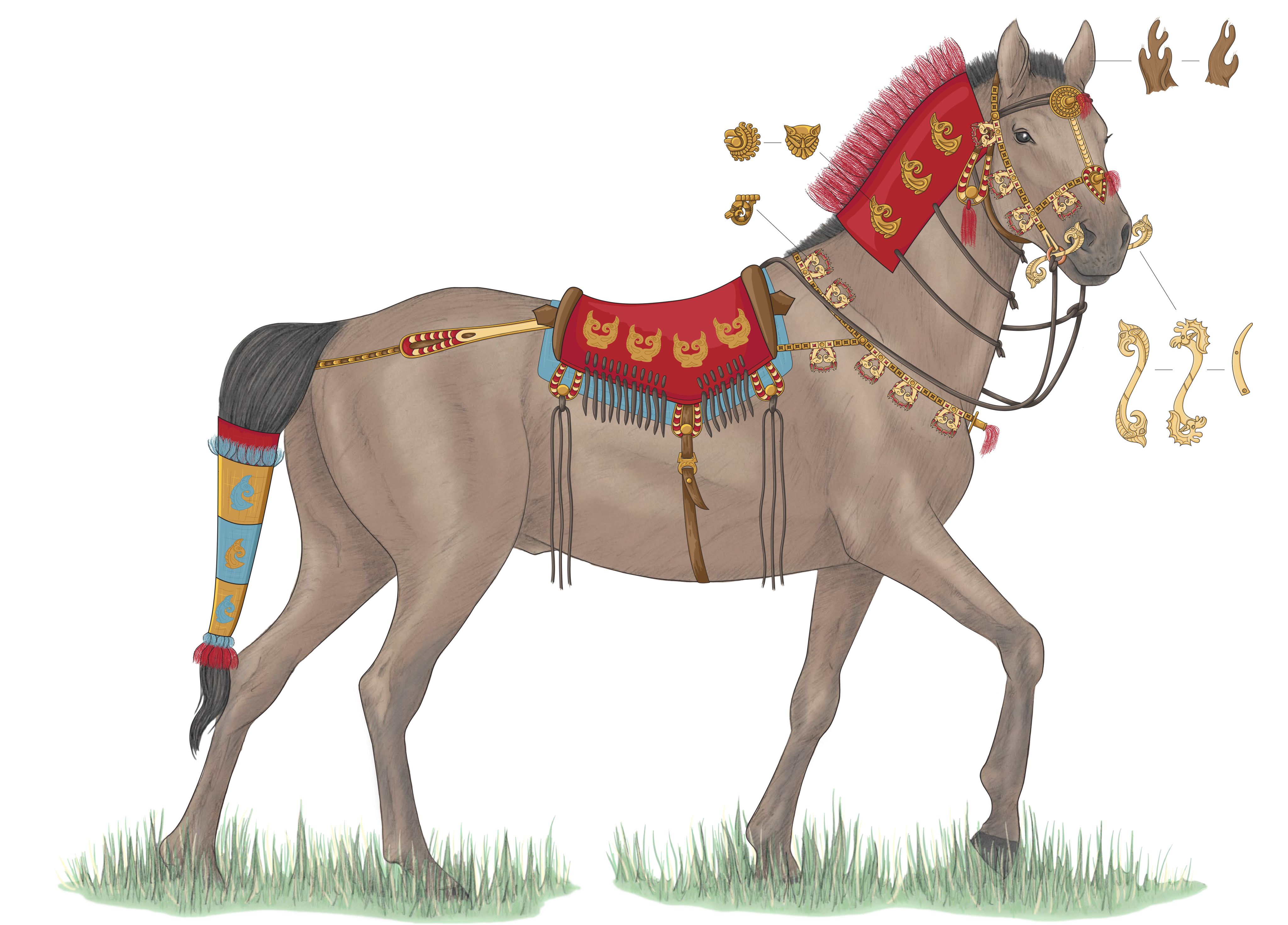
Reconstruction of a horse in full riding tack based on those found in Berel kurgan 36. Image: Vicki Herring / Fitzwilliam Museum
Reconstruction of a horse in full riding tack based on those found in Berel kurgan 36. Image: Vicki Herring / Fitzwilliam Museum
Other exquisite gold creations, fashioned into deer, argali (wild mountain sheep), wolves, wildcats and griffins provide insights into the Saka’s highly stylised art, complex symbolic language and mythological view of the world.
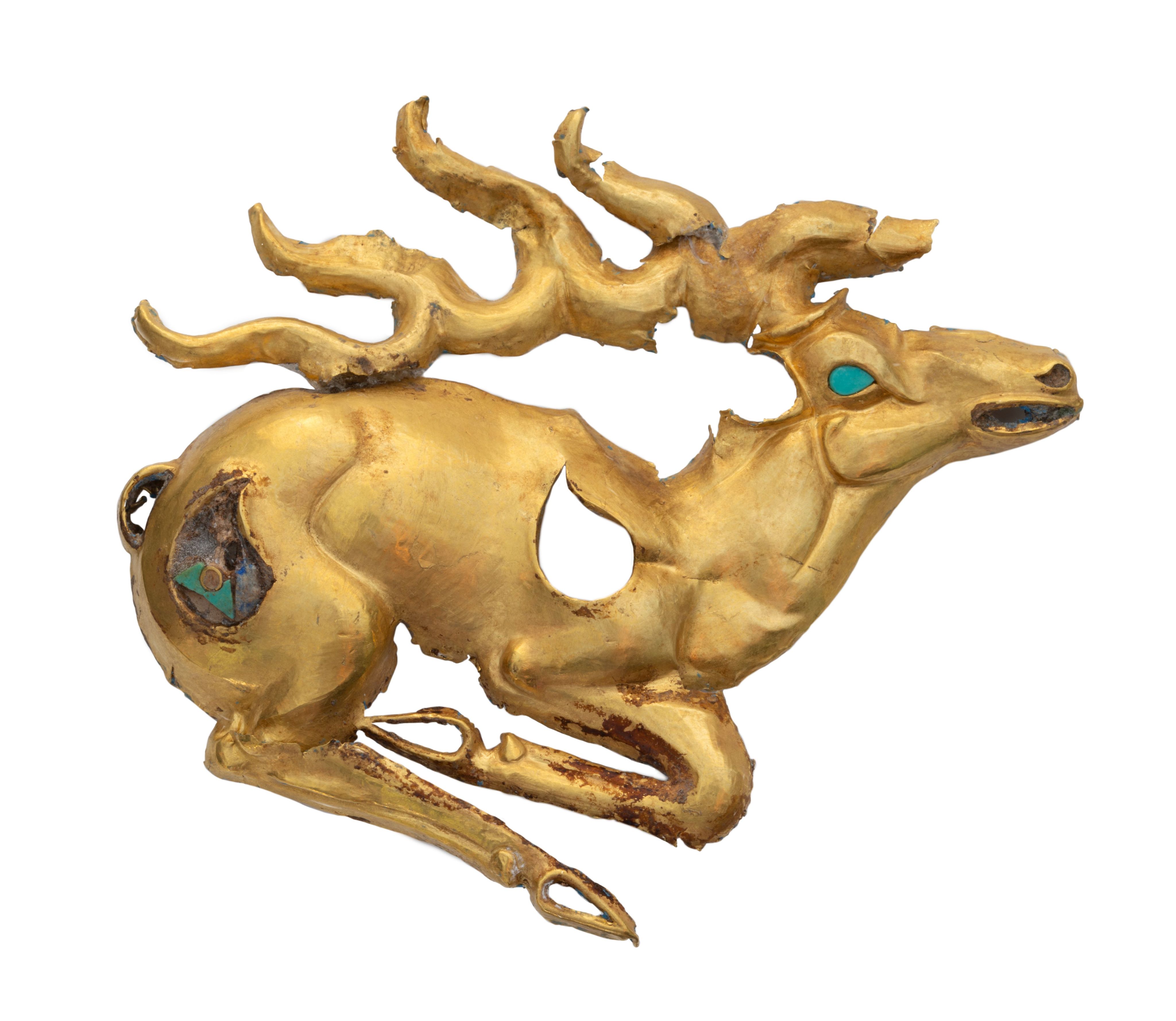
Recumbent stag plaque. Gold with inlays of turquoise and lapis lazuli. Eleke Sazy, Group II, Kurgan 4. 8th-6th century BC
Recumbent stag plaque. Gold with inlays of turquoise and lapis lazuli. Eleke Sazy, Group II, Kurgan 4. 8th-6th century BC
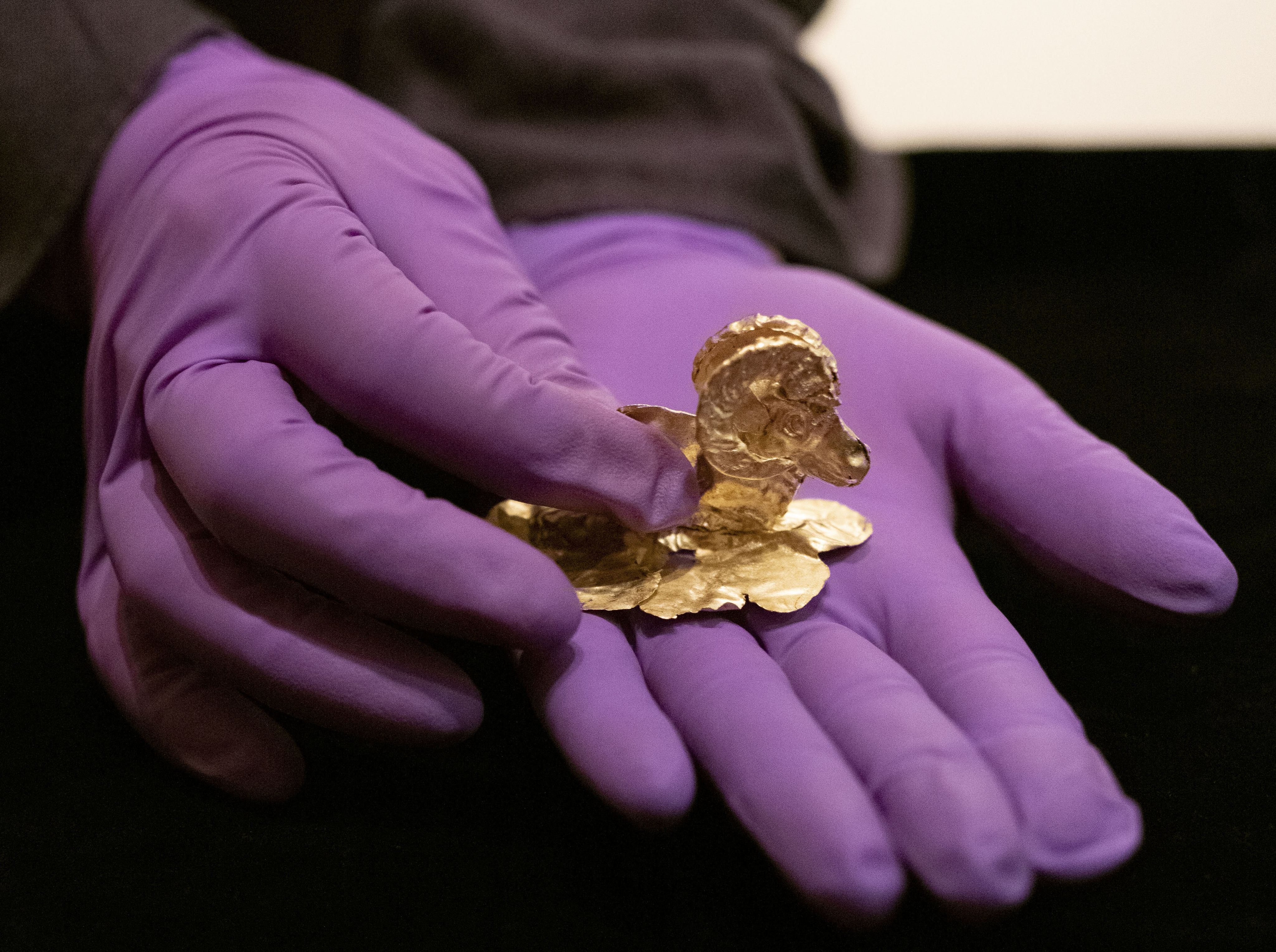
Gold figure of an argali on a petal or cloud stand. Eleke Sazy, Group VI, Great Earthen Mound 'Patsha'. c. 6th-5th century BC. Photo: Amy Jugg / Fitzwilliam Museum.
Gold figure of an argali on a petal or cloud stand. Eleke Sazy, Group VI, Great Earthen Mound 'Patsha'. c. 6th-5th century BC. Photo: Amy Jugg / Fitzwilliam Museum.
The exhibition challenges the assumption that people who are very mobile are somehow less sophisticated. Roberts says: “The Saka had a deep connection with nature, but that relationship was highly ordered and that’s encapsulated in the art. These people were masters of this landscape.
“They built settlements, grew crops and raised animals but they were largely nomadic because that’s the most sophisticated way to use the steppe, to negotiate its extremes of weather and ecological zones.”
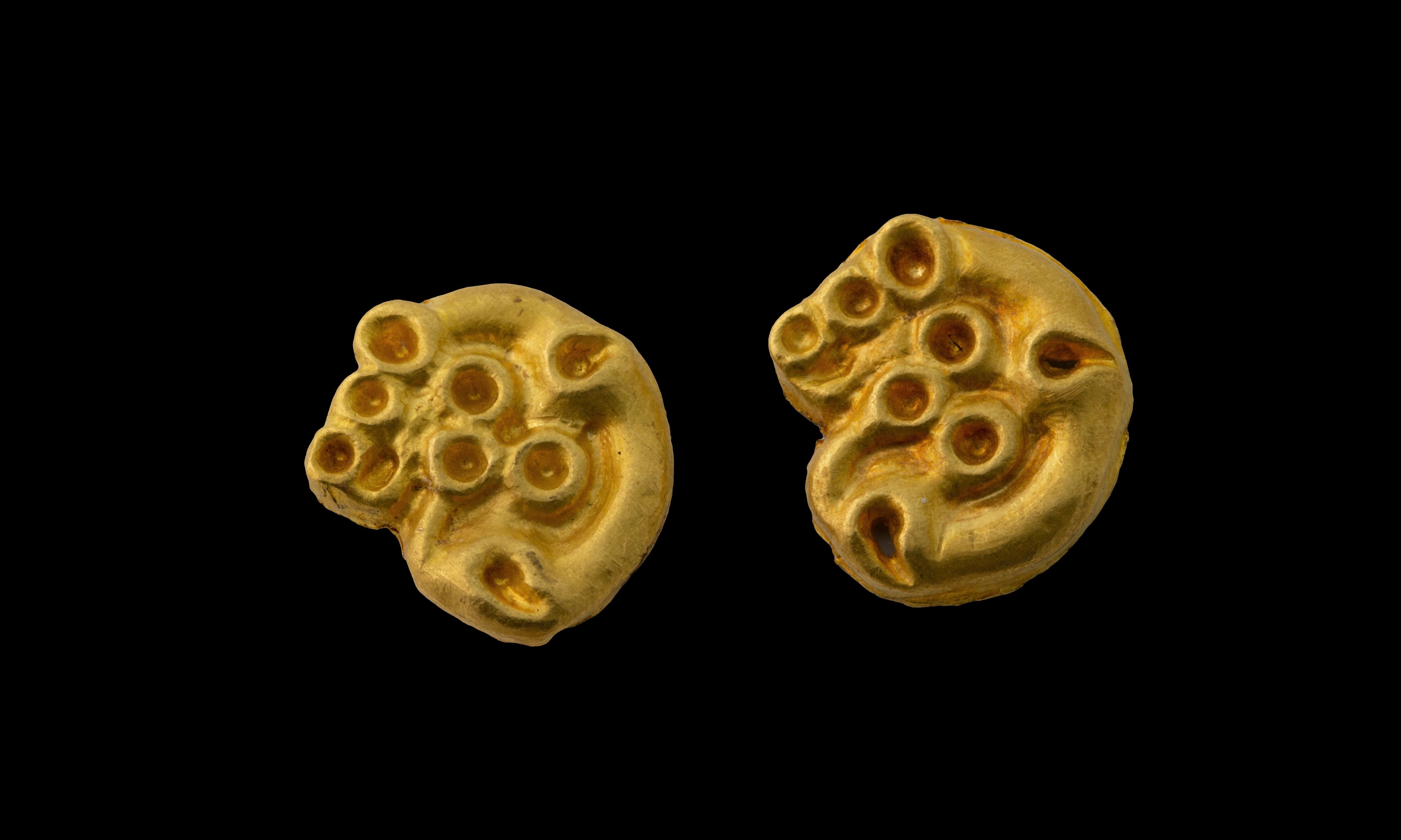
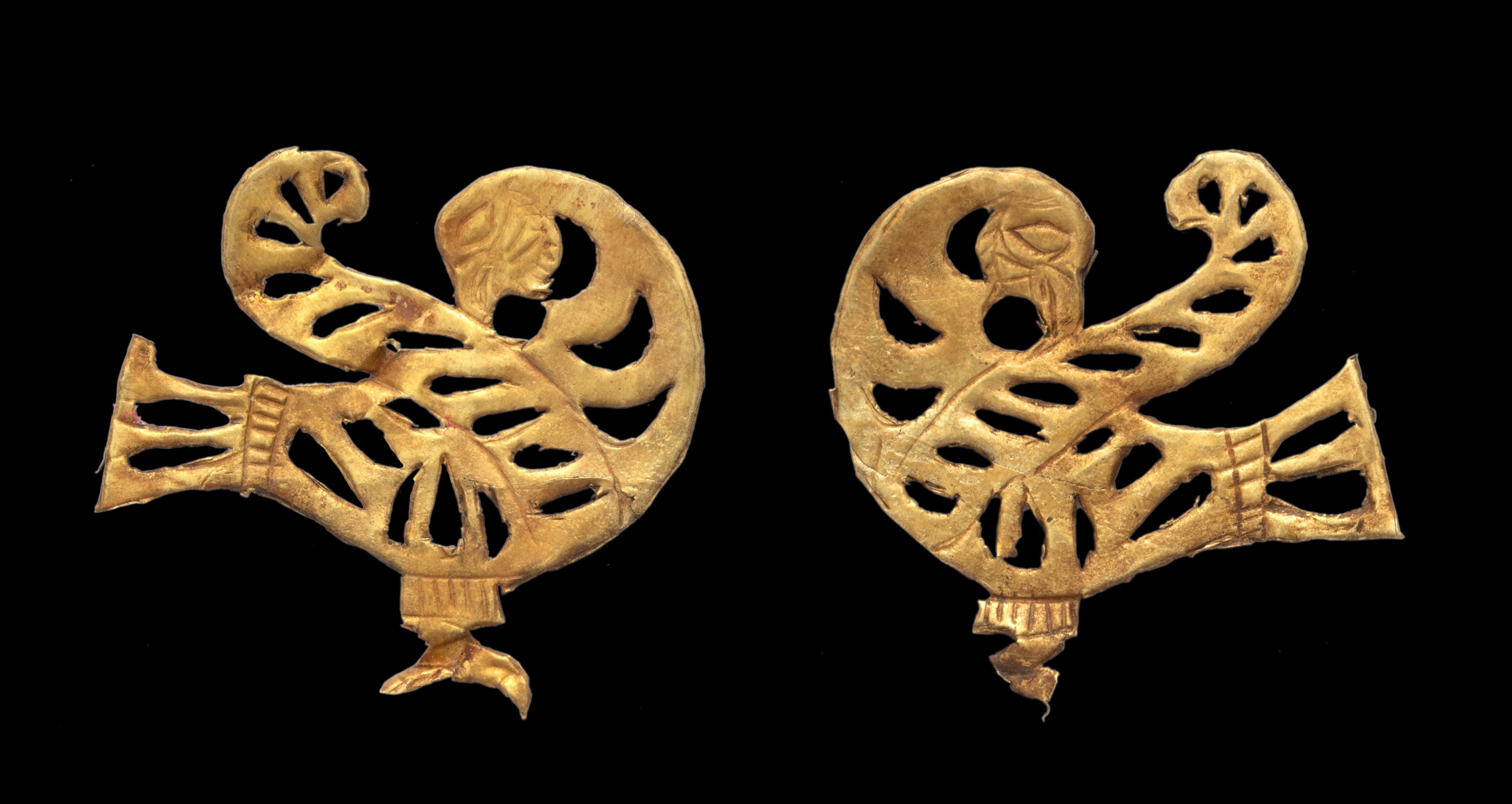
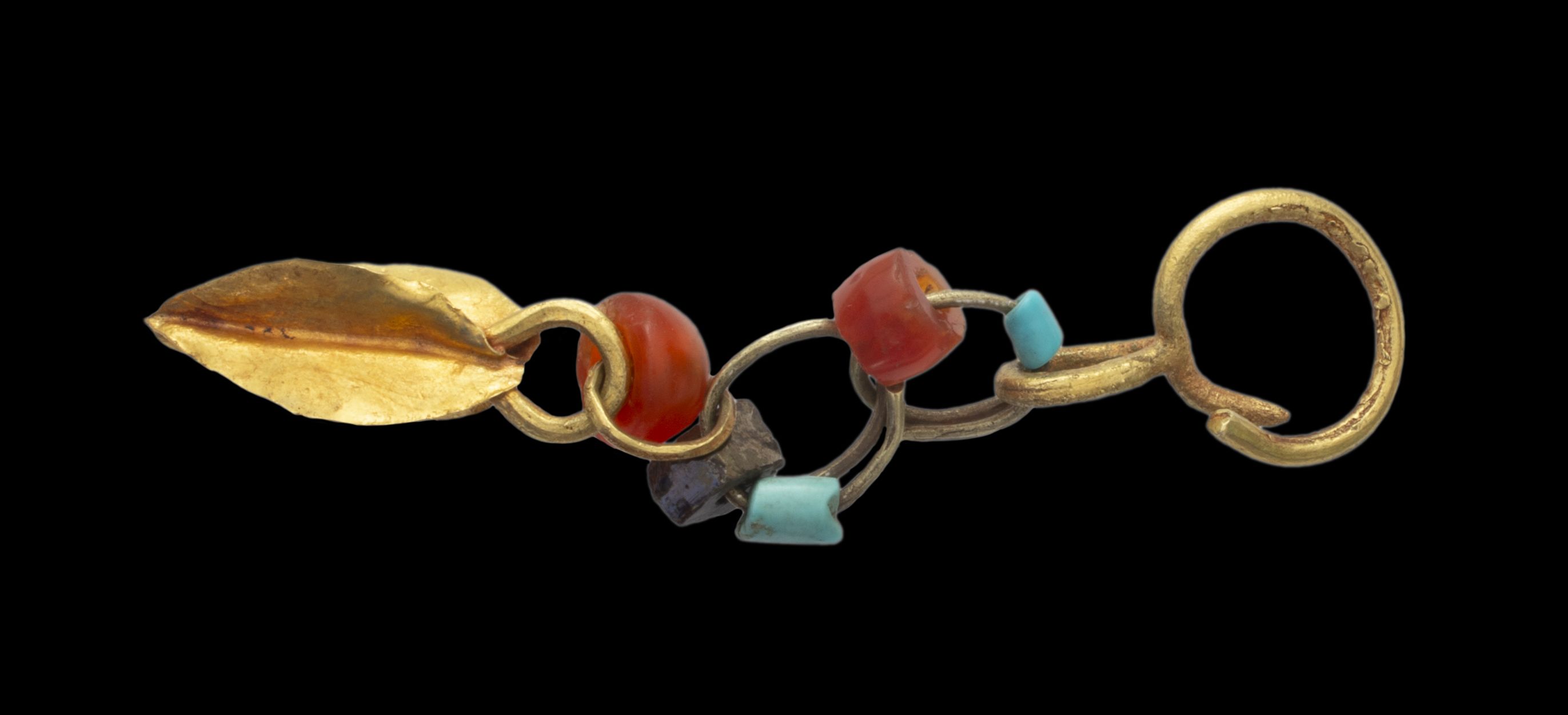
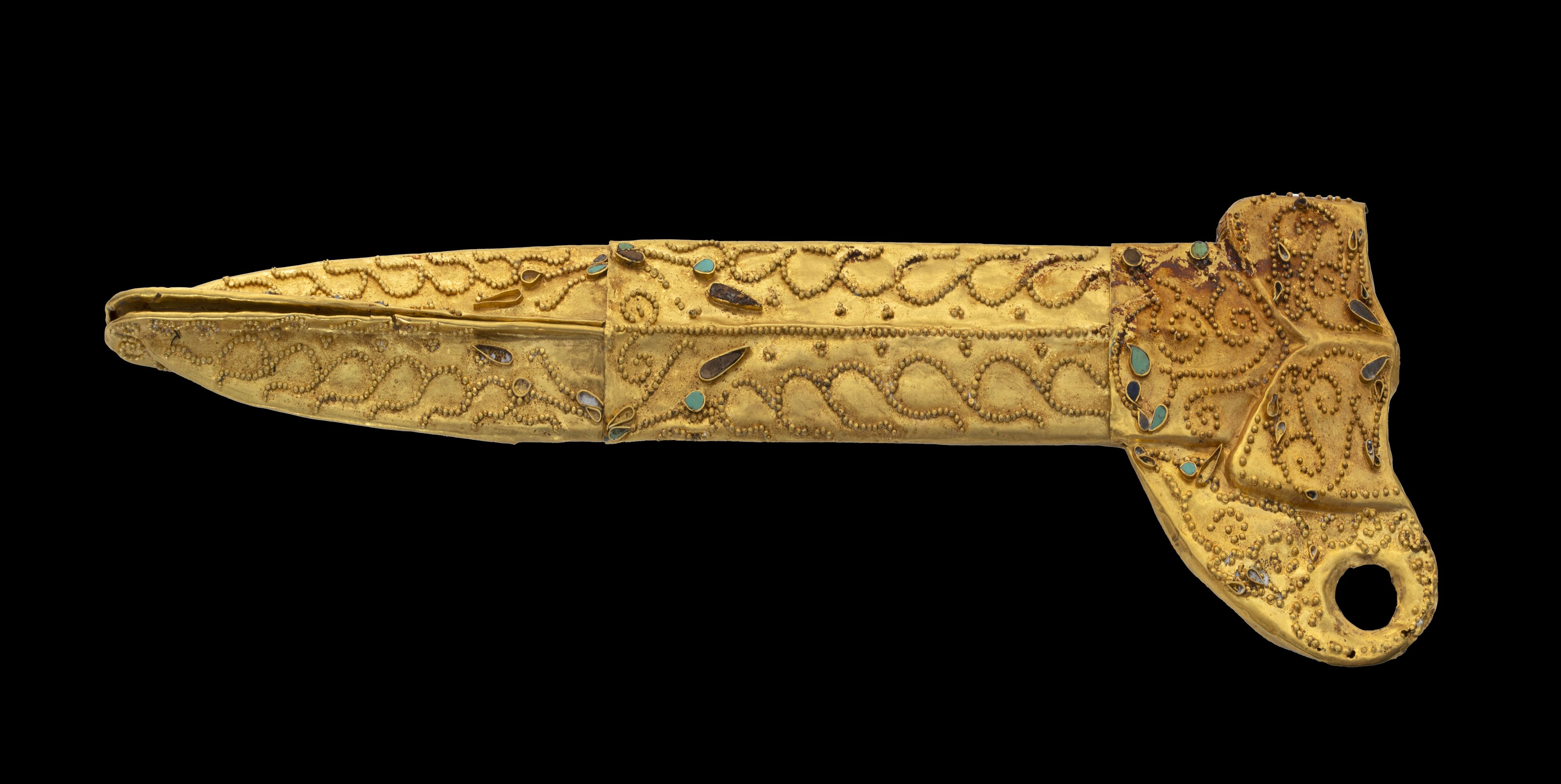
Over the next few months, Amir and her Cambridge colleagues will be analysing both the metallurgy of the gold as well as trying to identify which skins, horn and bone were used, as well as radiocarbon dating. It has already been established that the gold burial objects – including a beautiful scabbard, bow case, headdress decorations and the microbeads – all have very similar composition suggesting that they were made specifically for the teenage archer. They do, however, differ in composition to the hoard objects found under stones in the north-eastern sector of the kurgan. They appear to have been made separately and probably deposited later.
Roberts explains: “There seems to have been a tradition of commemoration where people brought gifts, particularly clothing and horse harnesses, to remember the dead. It’s interesting because strips from the clothes of the deceased are still handed out in funerary rituals in Kazakhstan today so threads of steppe tradition live on.”
Artefacts from Kurgan 4 will be among the first to be analysed using the new scanning-electron and 3D microscopes, XRF instruments and other equipment acquired using AHRC CHERISH grant jointly awarded to the McDonald Institute and Fitzwilliam Museum.
The people of the Great Steppe were among the earliest groups to make bronze, and the earliest evidence of gold working in the region comes from the middle of the third millennium BC. The Iron Age Saka people became world-class goldsmiths from the 9th century BC, a period when people in the British Isles appeared to have stopped making and wearing gold jewellery until around 400 years later.
Amir says: “It’s important to understand just how important metals have been in this region for thousands of years. The Eastern Kazakhstan side of the Altai Mountains is enormously rich in minerals, including copper and gold but even more importantly, tin, because it’s so rare. Exporting of metal started in the Bronze Age and this remains a major industry for Kazakhstan.” The country has the second largest copper deposit the world, Zhezkazgan.
Amir’s favourite artefacts in the exhibition are the gold microbeads. “This was a really sophisticated status statement in a very hierarchical society,” Amir says. “They weigh less than 1g, their diameter is less than 1mm, and when you look at them under the microscope, you think “wow, this is a piece of art”. We don’t know yet how they were made. It’s just mind-blowing. I’m really excited to analyse them in detail.”
Roberts’ favourite artefact isn’t golden or even decorative. She says: “The girl’s burial was violently looted and all that remained with her scattered bones, that we can be sure belonged to her, was a little bone weaving tablet with nine holes drilled in it. It's a tiny, delicate object. It tells part of her story that has been nearly completely lost.”
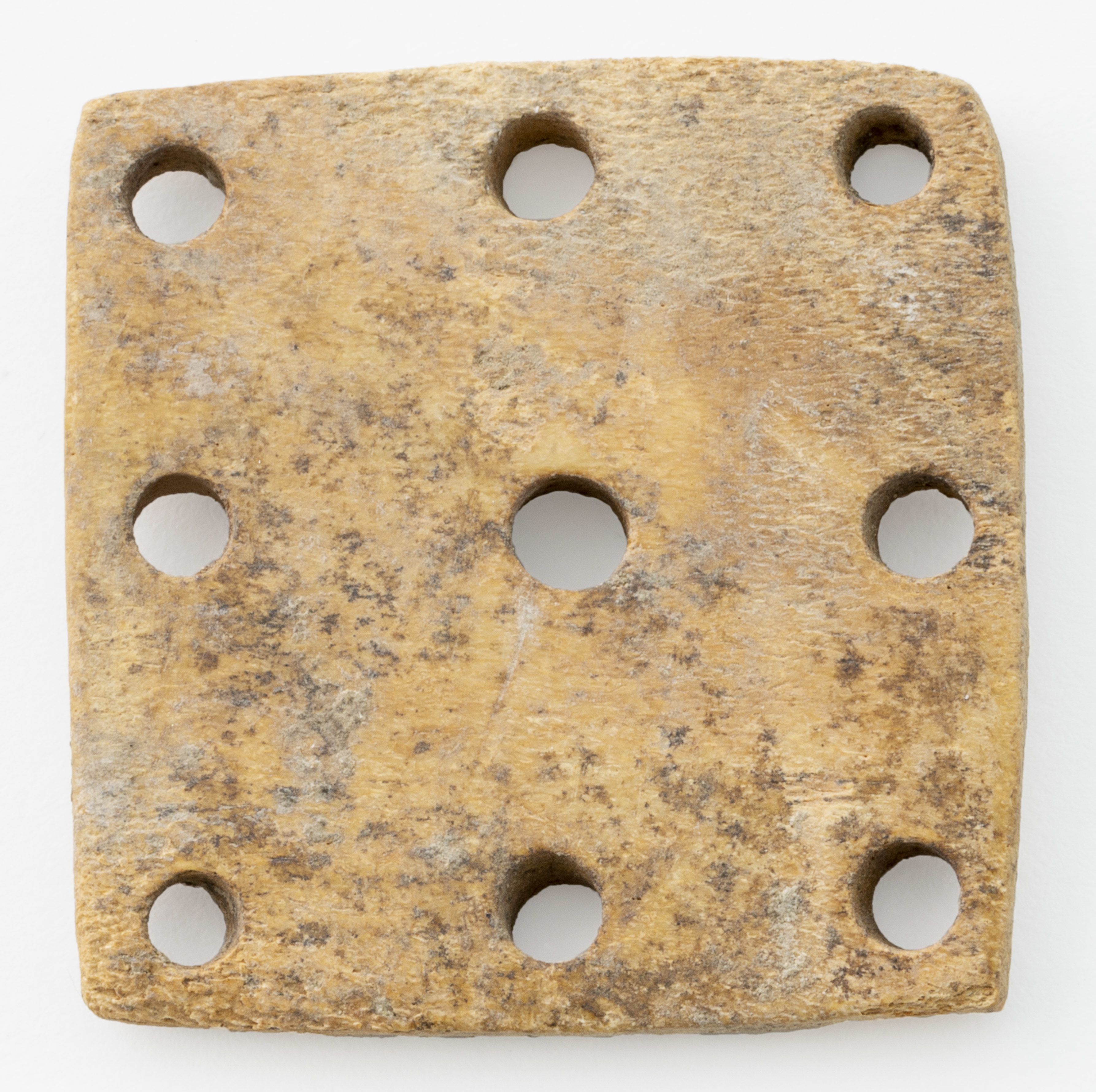
Worked bone square plate with nine drilled holes. Possibly for tablet weaving. Eleke Sazy, Group II, Kurgan 4. 8th-6th century BC
Worked bone square plate with nine drilled holes. Possibly for tablet weaving. Eleke Sazy, Group II, Kurgan 4. 8th-6th century BC
For both Roberts and Amir, increasing awareness of the strength of women in Saka society is a key outcome of the excavations and exhibition. Women were buried with high prestige objects and were prominent members of Saka society.
Towards the end of the Saka period in East Kazakhstan, incursions from Siberia, Mongolia and northern China forced some of the Saka south, where they eventually entered northwest India. “But there was also genetic mixing”, says Roberts, “and some of the newcomers used Saka cemeteries and started adopting and adapting Saka rituals including burying people with horses. Their traditions had incredible longevity.”
The beautifully illustrated book accompanying the exhibition is the first publication in English to describe the recent excavations, and the first to reveal Saltanat Amir’s metallurgy results.
Published 14th October 2021

